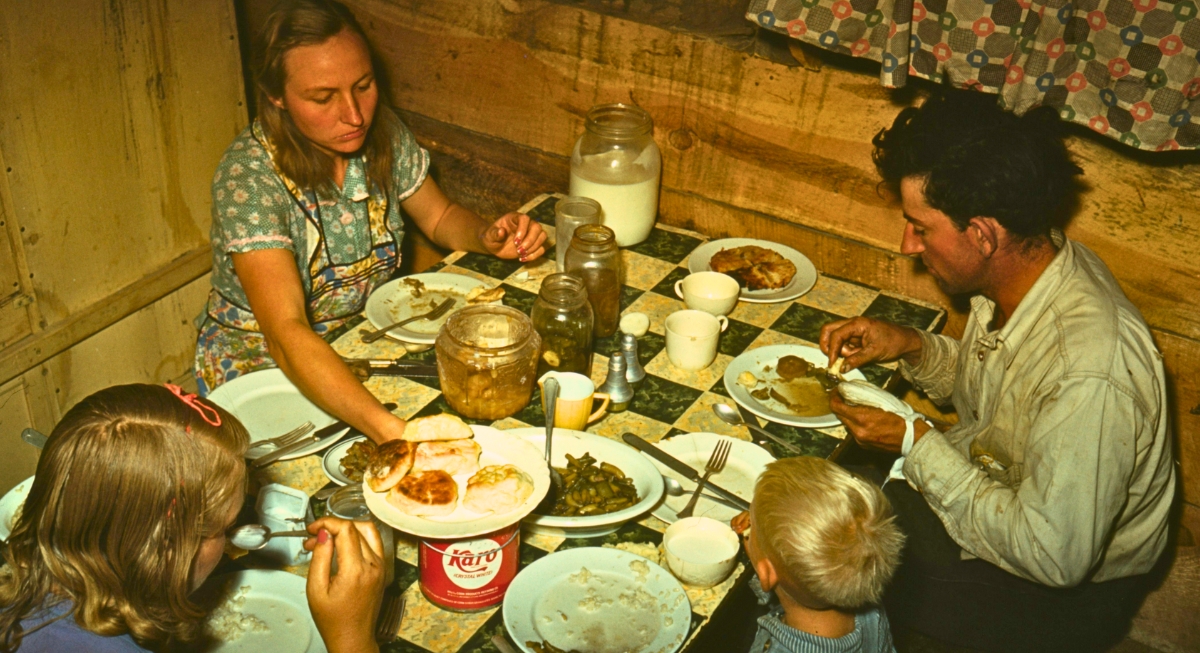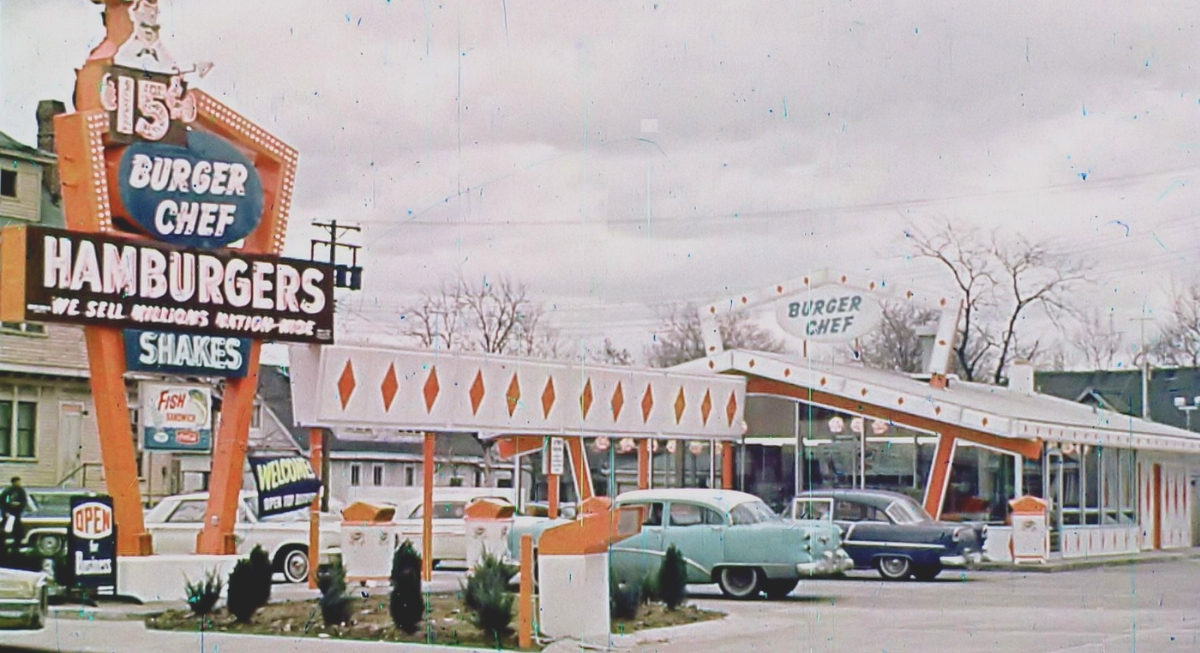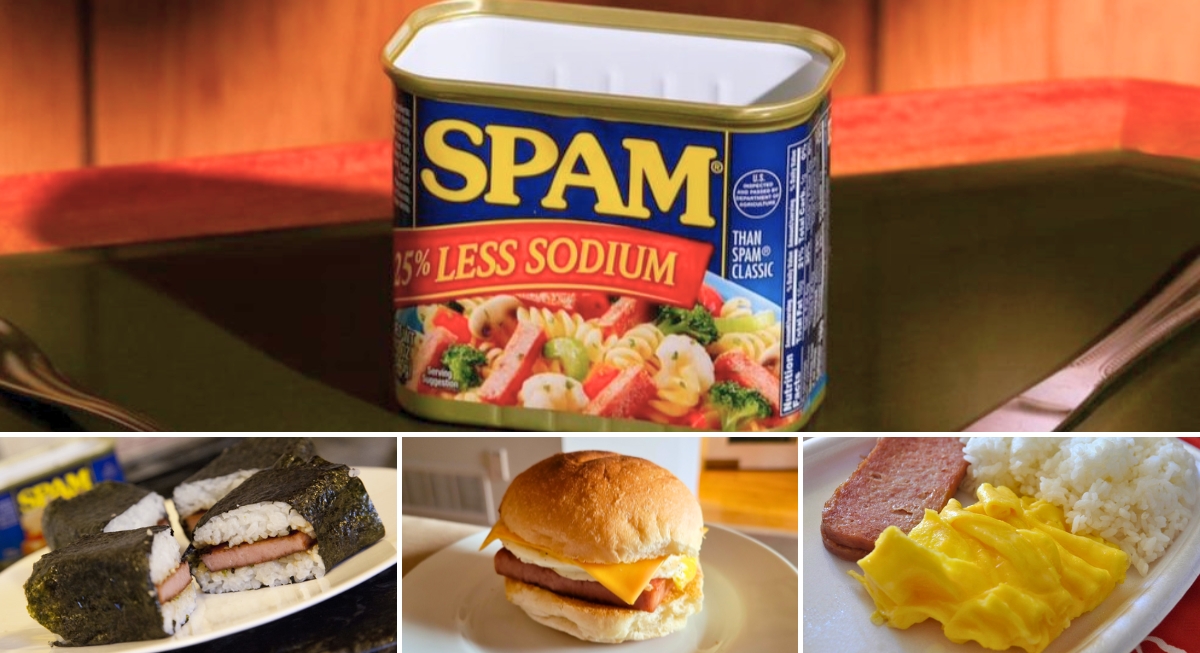There was a time when pantries were bare, and creativity was the key ingredient in every kitchen. During the Great Depression, resourceful Americans transformed humble staples into hearty meals that filled empty stomachs and lifted spirits. These recipes, born out of necessity, are relics of the past that offer timeless lessons in resilience and culinary creativity that continue to inspire us today.
Green Tomatoes
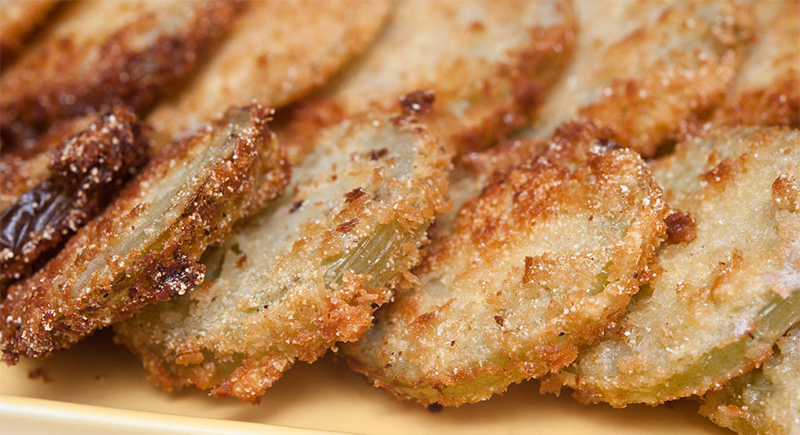
Credit: flickr
When ripe tomatoes were scarce, people turned to green ones. Instead of letting them go to waste, people sliced, coated, and fried them until crispy. The tart flavor balanced with a crunchy coating made for a satisfying bite. They worked as a side dish or sandwich filling.
Dried Beans and Legumes
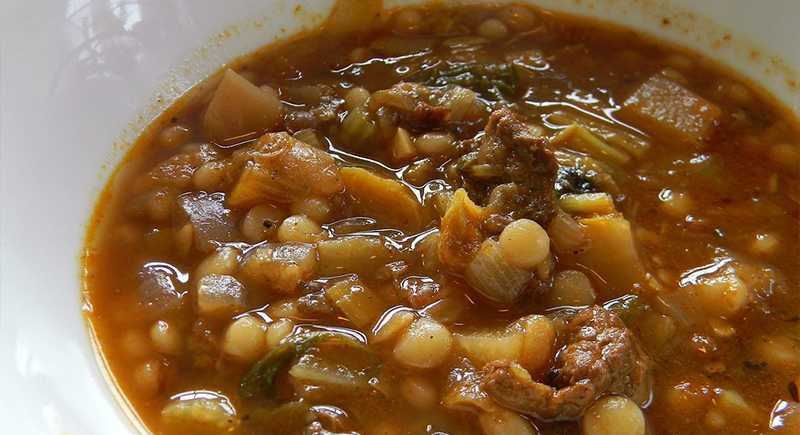
Credit: flickr
When money was tight, beans were a strategy. A sack of dried beans could feed a family for days, and they offered real substance: protein, fiber, and the kind of fullness that kept you going. When slow-cooked with onions or a bit of salt pork, they became a meal that felt generous even when times weren’t.
Vesta Curries
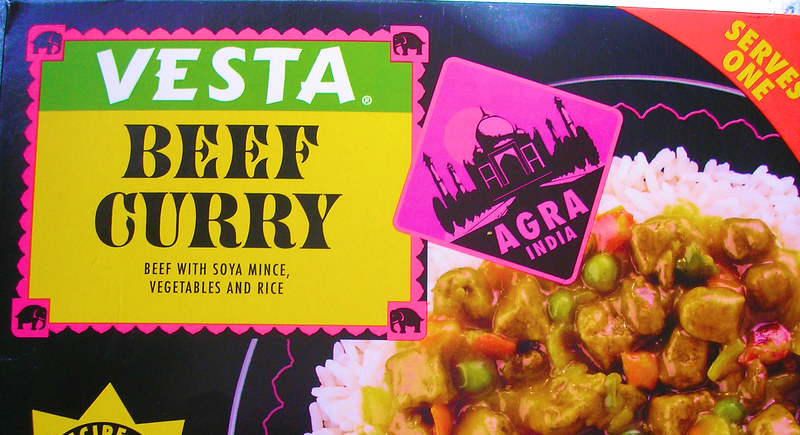
Credit: flickr
During lean years, flavor often took a back seat—but not for long. Vesta curry powder, an affordable British import, gave otherwise bland meals a bold kick. With just a pinch, ordinary ingredients like boiled potatoes, leftover vegetables, or canned meats were transformed into something with personality. It wasn’t authentic Indian cuisine, but it brought warmth and variety to kitchens where repetition was the rule.
Cabbage and Noodles (Haluski)

Credit: flickr
This humble dish came straight from Central and Eastern European kitchens, but it found a welcome home in American households during the Depression. Cabbage was cheap and kept well, while egg noodles filled out the plate. When fried in a bit of butter or saved bacon grease, the cabbage turned sweet and tender.
Hoover Stew
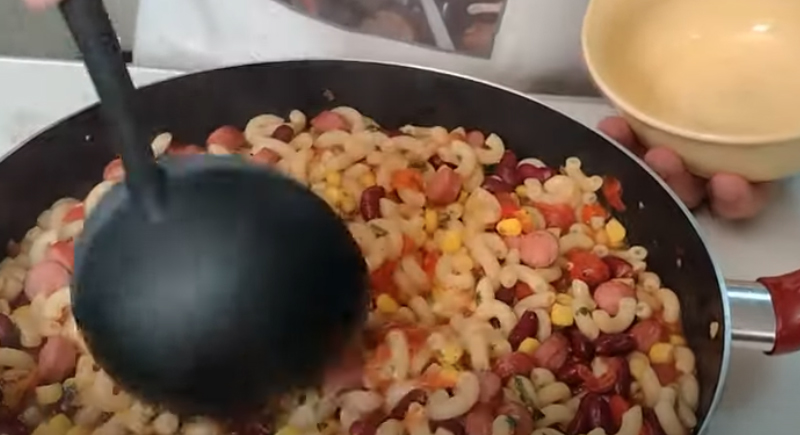
Credit: Youtube
Named not out of affection but a necessity, Hoover Stew came together in soup kitchens and crowded home kitchens alike. Elbow macaroni, sliced hot dogs, canned tomatoes, and whatever vegetables were on hand—all boiled into one big pot. It wasn’t about taste as much as it was about survival. But even so, it had a kind of charm: warm, filling, and easy to share. It stretched ingredients farther than anyone thought possible, and for families with more mouths than money, that mattered.
Chicory Root

Credit: flickr
When real coffee was out of reach, people got creative. Chicory root, roasted and brewed like coffee, became the morning fix for thousands of households. It had a dark, bitter flavor—not quite coffee, but close enough to pass. In places like Louisiana, it even became a tradition.
Dried Grains
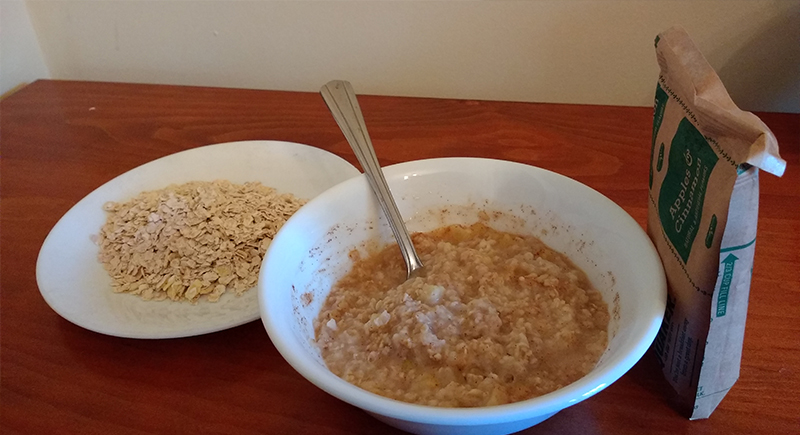
Credit: Wikimedia Commons
Grains were the foundation of many meals—not because they were trendy, but because they were practical. Rice, oats, barley, cornmeal—these were staples that could be bought in bulk and kept for months. A handful of oats in the morning set the day off right. Rice bulked up stews or paired with beans. Barley gave soups more body.
Fish and Game Stews
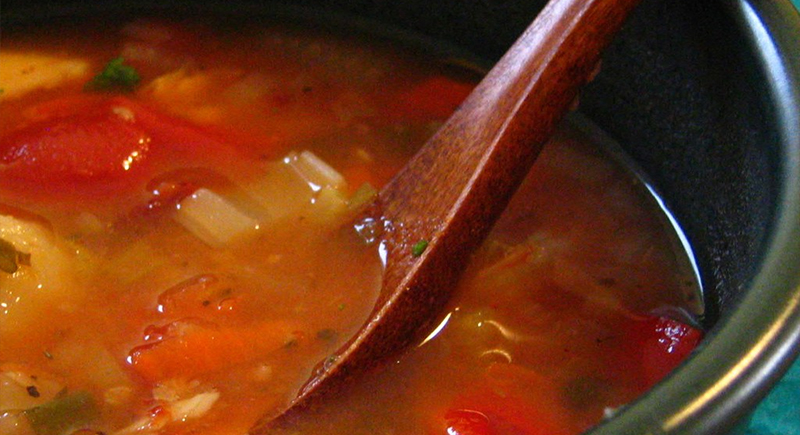
Credit: flickr
For rural families, hunting and fishing were how dinner showed up. A squirrel, rabbit, or trout pulled from the stream could stretch with potatoes, carrots, and onions into a stew that warmed the whole house. Tough cuts became tender with time, and every bit was used.
Peanut Butter and Mayonnaise Sandwiches
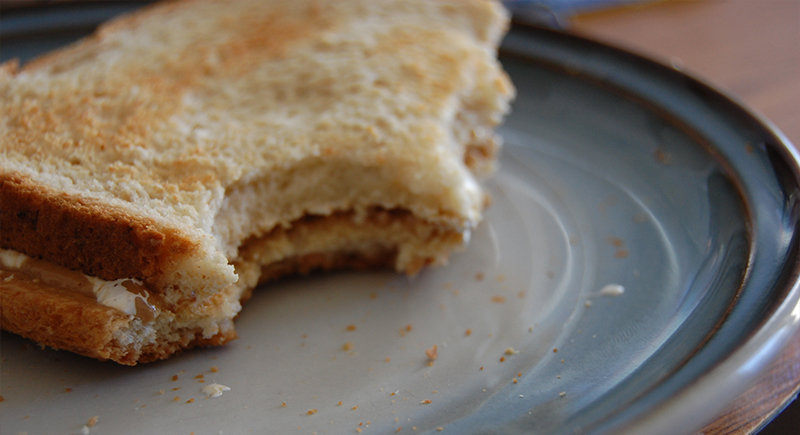
Credit: Wikimedia Commons
Strange as it may sound today, this sandwich was a Depression-era staple. Peanut butter added protein and heft, while mayonnaise added fat and made it easier to spread. On soft white bread, it was quick, cheap, and—according to many who grew up with it—surprisingly tasty.
Salt Pork

Credit: flickr
Salt pork was a preservation miracle. Long before home refrigerators were common, salt pork could last for months in a cool pantry. It was fatty, salty, and deeply smoky—a relic of a time when nothing was wasted and every scrap mattered.
Potted Meat Spread

Credit: Wikimedia Commons
Tinned meat was often the difference between a meal and going hungry. Potted meat spread—mystery ingredients and all—offered a hit of protein and a full belly. Spread on bread, crackers, or a biscuit, it was quick, shelf-stable, and didn’t need a stove. It wasn’t elegant, and no one knew exactly what was in it, but it filled the gap when fresh meat was out of reach.
Lentil and Kale Stew
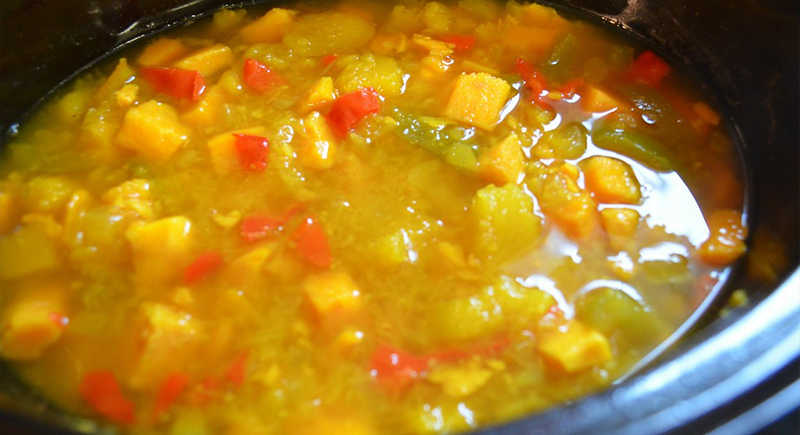
Credit: flickr
Hearty, nourishing, and incredibly affordable, lentil and kale stew became a favorite for those who knew their way around a tight budget. Lentils cooked quickly and didn’t need soaking, while kale stood up well to long simmering. Add garlic, onions, and a splash of vinegar or tomato, and you have a rich, flavorful pot of food that covers all the bases—protein, fiber, and vitamins.
Grilled Cheese Sandwiches

Credit: Wikimedia Commons
A grilled cheese sandwich is all about transformation. With just a bit of butter and a hot pan, two ordinary slices of bread become golden, crispy, and irresistible. Even cheap cheese melts into something luxurious. Paired with tomato soup or eaten on its own, it is the meal kids ask for, and grown-ups don’t mind having it again.
Depression (War) Cake

Credit: flickr
When baking staples were hard to come by, resourceful home cooks didn’t give up—they improvised. Depression cake, sometimes called war cake, skipped the eggs, butter, and milk entirely. Instead, it relied on pantry items like raisins for moisture, vinegar for leavening, and warm spices to lift the flavor.
Powdered Milk
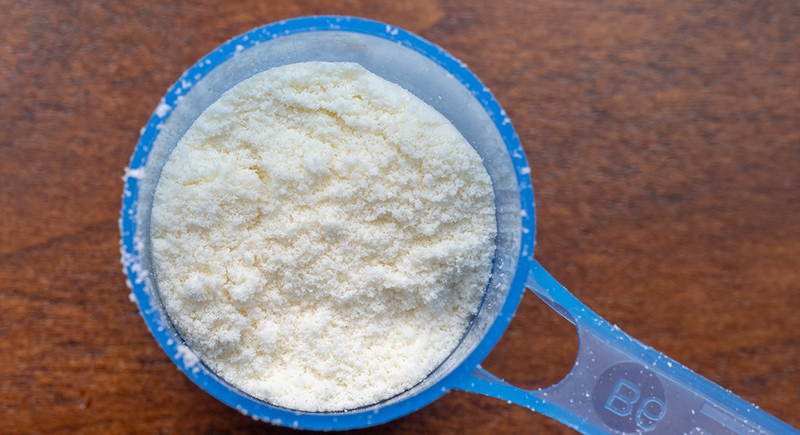
Credit: flickr
Powdered milk wasn’t anyone’s first choice, but it became a pantry essential when fresh milk was a luxury. It could be used for drinking, baking, or stirred into cereal. It was far from gourmet, but it provided calcium and protein for growing kids. In many households, it was the only milk they knew for years.
Mock Dishes
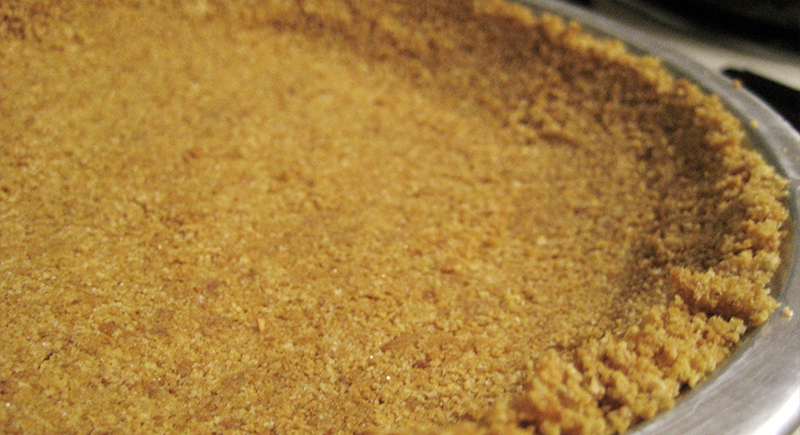
Credit: Wikimedia Commons
Cooks during hard times got creative out of necessity. Crackers replaced apples in pies. Mashed beans filled in for ground meat. Bread crumbs shaped into faux crab cakes. These were meant to preserve traditions and make do. Mock dishes allowed families to enjoy familiar meals, even when the key ingredients were missing.
Hardtack

Credit: flickr
Hardtack was the last line of defense against hunger. Just flour and water, baked until rock-solid, it could last indefinitely. Sailors and soldiers had relied on it for centuries, and so did families during tough times. Soaked in stew or soup, it softened just enough to be edible. No one loved it, but it was food—and sometimes, that was enough.

